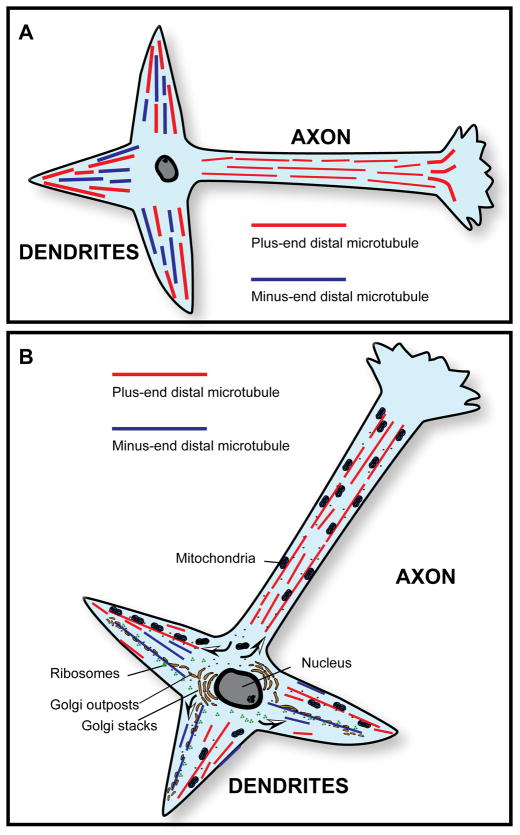Figure 1.
A, Microtubule polarity patterns in typical vertebrate axons and dendrites. Axons contain uniformly oriented microtubules (plus-end-distal), while dendrites contain non-uniformly oriented microtubules. B, Microtubule polarity patterns as the basis for asymmetric organelle distribution in vertebrate neurons. A simple yet attractive model for the asymmetric distribution of organelles in the vertebrate neuron posits that axons and dendrites contain those organelles that are transported from the cell body toward plus ends of microtubules (such as mitochondria) but only dendrites contain those organelles that are transported from the cell body toward minus ends of microtubules (such as Golgi outposts and ribosomes). Arrows in B show the direction of organelle movement.

